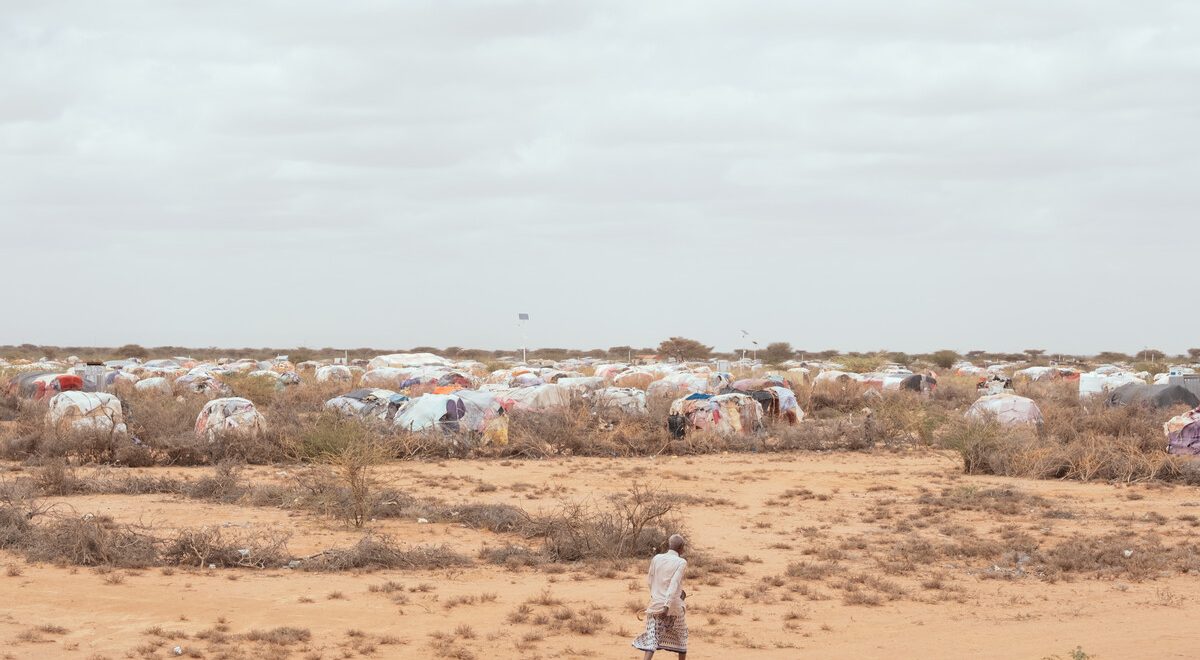ActionAid USA (alongside Justice Is Global, Union of Concerned Scientists, Friends of the Earth, the Women’s Environment and Development Organization and Corporate Accountability) has launched a campaign calling on Congress to pass two bills that are crucial to doing our fair share of climate action: the Green Climate Fund (GCF) Authorization Act and the Climate Displaced Persons Act (CDPA).
These two bills do very different things, but both represent a key aspect of achieving global climate justice. The GCF Authorization Act authorizes contributions of $4 billion per year to the Green Climate Fund, the world’s largest fund dedicated to supporting climate action in developing countries. The Climate Displaced Persons Act creates a new visa program for people forced to migrate due, at least in part, to climate impacts, and sets a floor of 100,000 such visas per year.
What’s the link between climate finance and immigration policy? It’s simpler and more straightforward than you might think.
A key goal of climate finance — aka money from rich countries to support climate action in poorer countries — is to build resilience for communities so they can better cope with climate impacts. Those might include disasters like storms and floods, or so-called “slow-onset events” like increasing soil salinity due to sea level rise, or unpredictably changing rainfall patterns, both of which put food security at risk.
What happens when communities don’t have the resources they need to build resilience?
As our research in six South Asian countries has shown, in many cases, communities are forced to migrate. Members of rural communities who are unable to maintain their livelihoods because of crop failures (due to drought, floods, soil salinization, or other climate impacts) often move to urban areas, typically to find poorly paid unskilled work, or cross borders to find opportunities elsewhere and send remittances home. These folks are often thought of as “economic migrants” when, in fact, climate change was a major factor in their displacement — a factor that could have been mitigated if the world had taken more aggressive climate action, including and especially through effective climate finance for poorer countries.
In short: one of the benefits of climate finance is that it enables people to build resilience and thus reduce the chances that they might be displaced by climate impacts. As our colleagues in the migrant justice movement might say, climate finance supports people’s fundamental “Right to Stay” — that is, their right not to be forcibly displaced from their homes.
But the sad truth is that the U.S. and rich countries have failed to meet their obligations to deliver climate finance for decades. Meanwhile, the climate crisis has intensified, and climate impacts are being felt around the world, with the poorest and most vulnerable left to cope on their own without adequate outside support. As a result, millions of people are already being forcibly displaced by climate change, a figure widely expected to increase dramatically by 2050.
Given this reality, U.S. responsibility for global climate action can be understood as having three major elements:
- Reduce our greenhouse gas emissions to zero as quickly as possible through a just transition to a new sustainable economy, phasing out all fossil fuels and making similar transformations in non-energy sectors like agriculture and transportation.
- Rapidly scale up climate finance to developing countries to support similar economic transitions, build resilience for communities, and address loss & damage that will result from unavoidable future climate impacts.
- Ensure the just and humane treatment of all people affected by climate change, including those who are forced to migrate from other countries into the United States at least partly as a result of climate impacts.
The policy tools to meet the first two pillars are clear. Many groups, from environmental groups to frontline community groups to labor unions, are working to transform and decarbonize the U.S. economy. On climate finance, we’ve long advocated for large-scale U.S. contributions to democratic multilateral institutions like the Green Climate Fund.
But what about that third pillar? The Climate Displaced Persons Act is a first step towards a just and humane treatment of climate-induced migrants: ensuring that they have the right to come to the United States and live their lives free of the fear of detention and deportation is an absolute bare minimum. This is the opposite of the approach our country has taken to date — at best, we have offered some immigrants “Temporary Protected Status,” which is (as the name itself indicates) not a long-term solution. At worst, we have closed and militarized our borders against immigrants, including in direct response to disasters, as when Hurricane Dorian hit the Bahamas in 2019.
Next steps for securing justice
The CDPA does not solve all the problems our country has with the mistreatment, abuse and outright murder of immigrants. But it is a start, and it opens a broader conversation about the relationship between climate justice and migrant justice. Increasingly, in the era of climate impacts, these two things are in fact one and the same.
Join us in our campaign by calling on Congress to pass both the GCF Authorization Act and the Climate Displaced Persons Act. They are two very different bills, but they are both crucial steps towards global climate justice.

